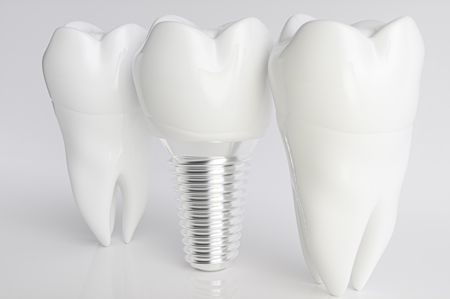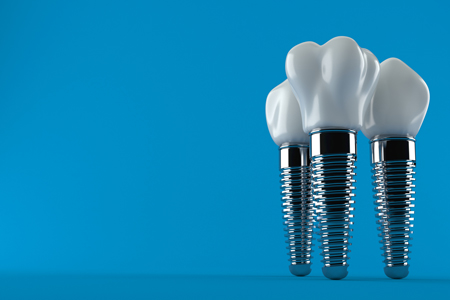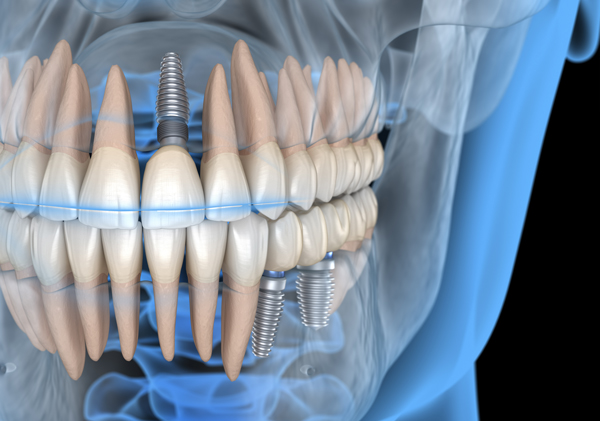Dental Implants
Dental implants are the gold standard for replacing missing teeth and offer a permanent solution to missing teeth. Although you have a number of restorative options for the treatment of missing teeth, none have proven to be as functionally effective and durable as implants.
At the Wing Dental Centre, we can provide complete dental implant placement and restoration using techniques in bone grafting, simple and immediate placement implant methods.
Advantages of Implant Dentistry
Dental Implants offer a permanent long-term solution to tooth loss. Implants may be used in conjunction with other restorative procedures for maximum effectiveness. For example, a single implant can serve to support a crown replacing a single missing tooth or can be used to support a dental bridge for the replacement of multiple missing teeth. As well, dental implants can be used with dentures (implant-retained or secured dentures) to increase stability and improve function. Since the denture is no longer directly sitting on the delicate exposed gums, denture sores are usually non-existent.
The Dental Implant Procedure

Dental implants once completed are virtually indistinguishable from other teeth. Implants are typically placed in a single appointment, but afterward, they require a period of osseointegration.
Osseointegration is the process by which the titanium portion of a dental implant embeds itself into bone. An implant takes anywhere from three to six months to embed, anchor and heal, at which point our dentist can complete the procedure with the placement of a crown.
PRF Bone Grafting
At the Wing Dental Centre, we use Platelet Rich Fibrin (PRF) techniques, a method by which a patient's own blood is drawn, centrifuged, and carefully separated into PRF which promotes faster and better healing with the patient. We use this method for his extraction surgeries, periodontal soft tissue surgeries, bone grafting surgeries using PRF/sticky bone techniques, and immediate implant surgeries.
Placement of the Implant:

The dental implant is placed into the jaw in the spot where the missing tooth was. Following this placement, a protective cover screw is placed on top to allow the implant site to heal and the dental implant to anchor (osseointegration). After several months when healing is complete, the protective cover is removed and the permanent crown is placed on top of the dental implant.
Why are Dental Implants Recommended?
Dental implants are anchored into your jawbone, implanted teeth are completely secure and stable. Unlike dental bridges, they are not anchored to adjacent teeth and so do not carry a risk of affecting the structure of your remaining teeth. Also, they require no special maintenance apart from your usual dental routine of brushing, flossing, and regular dental hygiene cleaning appointments
Implants are suitable for most adults. Prior to booking an appointment for dental implant placement, our dentists will complete a full examination and x-rays to ensure that you are a candidate.
Call our Peace River dentists today to schedule a complimentary consultation at (780) 624-9464!

Using Technology To Plan Your Implants
Here are some of the tools we use to help give us the outcomes we are striving for:
Axeos CBCT - 2D/3D Scanner
TThe Axeos CBCT gives the dentist a 3d image of all surrounding teeth and bone structure to give the best results in the planning stage of your implants.
Cerec Primescan Intraoral Scanner
Where the Axeos give the overall picture of the mouth and jaw, the Cerec Primescan Intraoral Scanner will give the dentist a 3d model of the terrain of your teeth and gums to give you a tailor-made implant.
© 2025 Wing Dental and H-cube Marketing, www.DentalGrowthStrategies.com. All Rights Reserved.
